Email content will continue to become more personalized and less pre-packaged over the next few years.
A comprehensive email strategy should be “subscriber-focused” – involving audience management, segmentation, content planning, and communication frequency.
If you’ve shopped on Amazon, you’re familiar with their personalized emails.
“Recommended for You”, “Deals of the Day”- familiar, right? Through this relentless yet meticulously crafted strategy, Amazon keeps customers returning, their carts filling up with items they never knew they needed.
Amazon’s personalized email strategy is a world-class example of how smart, targeted communication drives customer retention, repeat purchases, and customer engagement.
Whether it’s an intentionally laid out product suggestion based on your recent browsing history or a nudge to review a product you’ve purchased, these emails are Amazon’s silent sales warriors, working rigorously behind the scenes to ensure your engagement with their marketplace.

Example of Amazon’s feedback email
So, what’s the magic behind this marketing prowess?
How does Amazon’s use of personalized emails lift them to the pinnacle of online retail success?
Let’s dive into this marketing marvel that is Amazon’s personalized email strategy.
Understanding Amazon’s personalized email strategy involves examining it layer after sophisticated layer. At its core, Amazon’s email campaigns lie on the premise of data analysis.
Every click, every purchase, and every search you make is meticulously tracked. Amazon doesn’t just know what you’ve bought; it knows what you’ve looked at and how much time you’ve spent looking.
This data analysis is then turned into actionable information catering to your unique consumer profile.
Ever received an email from Amazon and found yourself irresistibly drawn to that recommended book, kitchen gadget, or tech gizmo?
That’s data-driven personalization at play.
Amazon utilizes behavior-triggered emails, designed to engage you at just the right time. A classic example of this is the abandoned cart email. Did you leave something in your cart without checking out?
You’ll likely receive an email reminder, sometimes sweetened with a discount, to nudge you toward the completion of your purchase.
Since email marketing is dynamic, Amazon continuously optimizes and tests its email marketing strategy to stay at the forefront of personalized “subscriber-focused” email marketing.
Equally important is the tone that Amazon uses in its emails.
Their emails contain friendly suggestions, reminders, and even birthday wishes, promoting a sense of community and personal touch. It’s an effective method in fostering a two-way relationship that makes customers feel understood and valued.
What strategies does Amazon use to personalize their emails?
Amazon uses a variety of strategies to personalize their emails, the first of which is behavioral targeting. This involves tracking a customer’s browsing and purchasing history on the platform. Amazon then uses this data to recommend similar products that the customer might be interested in, which are included in the emails sent to the customer.

Another strategy Amazon employs is the use of dynamic content. This means that the content of the email changes based on the recipient’s behavior, preferences, and past interactions with the company. For instance, if a customer often buys books from a particular genre, the email they receive will feature books from that genre.
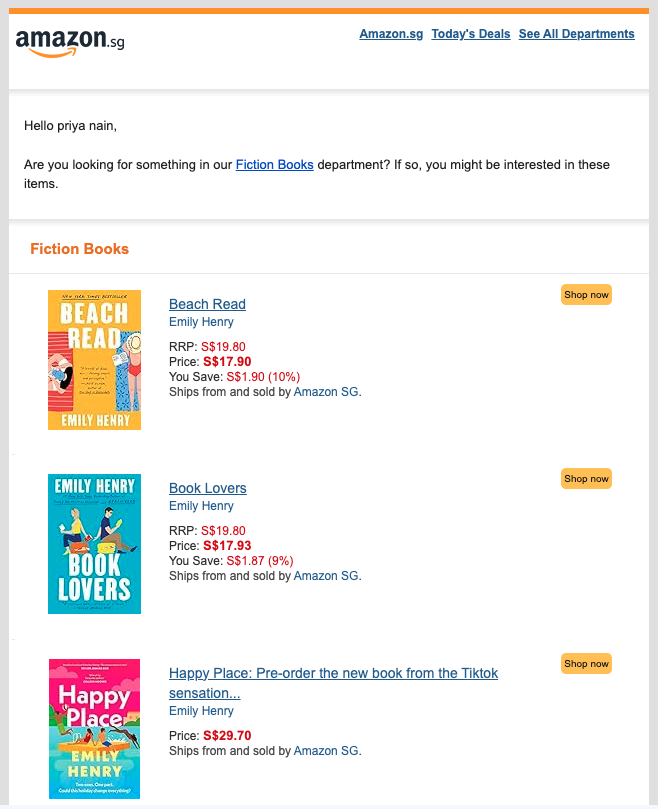
Amazon also makes use of triggered emails, which are sent in response to a specific customer action. For example, if a customer leaves items in their shopping cart without completing the purchase, Amazon will send a personalized email reminding them of the items they left behind.

Source: Kinsta.com
Furthermore, Amazon uses predictive analytics to forecast customer behavior and preferences. This involves analyzing past data to predict what a customer will likely be interested in the future. This information is then used to tailor the content of the emails sent to the customer.
Lastly, Amazon incorporates personal touches in their emails. This includes addressing the customer by their name and including personalized messages, such as birthday greetings or anniversary wishes. These small details help to make the customer feel valued and appreciated, which can increase engagement and loyalty.
How do these personalized emails contribute to Amazon’s customer retention?
Amazon’s personalized emails contribute significantly to customer retention by creating a sense of individual attention and relevance. These emails are tailored based on the customer’s browsing history, past purchases, and items left in their shopping cart. This makes the emails highly relevant to each customer, which increases the likelihood of them engaging with the email and making a purchase.
Another way these personalized emails contribute to customer retention is by fostering a sense of familiarity and trust. By consistently providing recommendations that align with the customer’s interests and needs, Amazon demonstrates an understanding of the customer’s preferences. This builds trust and encourages the customer to continue shopping with Amazon.
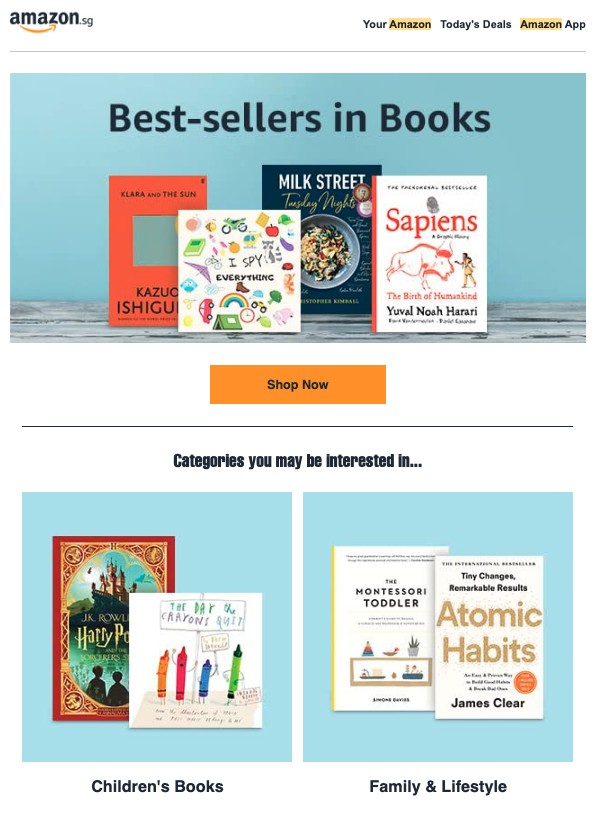
Amazon’s personalized emails also serve as a reminder of the wide variety of products available on their platform. By showcasing different products that the customer might be interested in, these emails keep Amazon at the top of the customer’s mind when they need to make a purchase. This constant reminder helps to retain customers by making Amazon their go-to platform for online shopping.
These emails often include personalized deals and discounts, which incentivize customers to make repeat purchases. By offering deals that are specifically tailored to the customer’s interests, Amazon increases the perceived value of their service, which can lead to increased customer loyalty and retention.
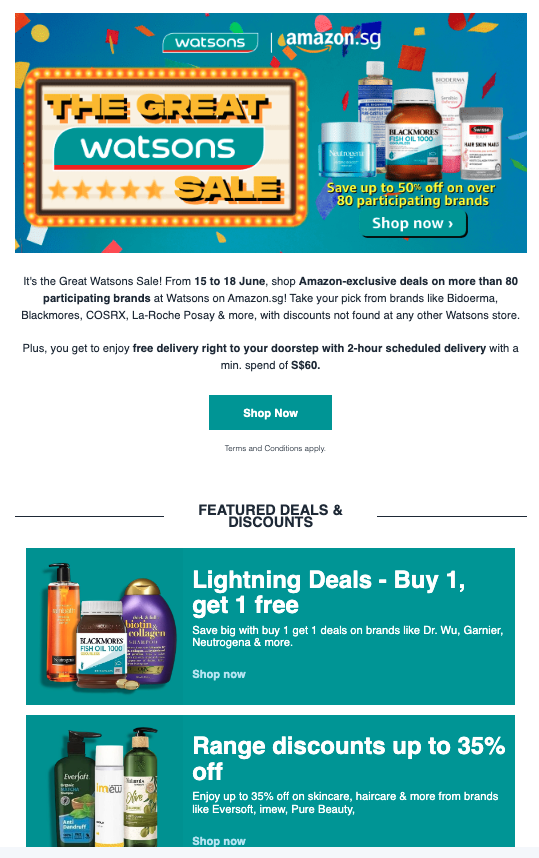
Amazon’s personalized emails contribute to customer retention by providing a seamless shopping experience. These emails often include direct links to products of interest, making it easy for the customer to make a purchase without having to search for the product on the website. This convenience factor can be a significant contributor to customer retention.
What is the impact of Amazon’s personalized emails on customer engagement?
Personalization in marketing extends beyond simply using a customer’s first name. It encompasses delivering content that resonates with the individual’s preferences and needs. Amazon leverages this strategy to enhance customer engagement significantly.
Personalized emails also increase the likelihood of customers opening the emails and clicking on the links within. This is because the content is specifically curated to match their preferences, making it more appealing and relevant. As a result, Amazon experiences higher email open rates and click-through rates, which are key indicators of customer engagement.
Amazon’s personalized emails have a 35% higher open rate than non-personalized emails.
Moreover, these personalized emails serve as a constant reminder of Amazon’s vast product range, enticing customers to revisit the site and make additional purchases. They often include items that the customer may have viewed but not purchased, or products similar to those they’ve bought in the past, subtly nudging the customer back towards the sales funnel.
Amazon’s personalized emails also foster a sense of loyalty and connection with the brand. By demonstrating that they understand and cater to the customer’s unique needs and preferences, Amazon builds a relationship with the customer that goes beyond a mere transactional interaction. This emotional connection can lead to increased customer retention and repeat purchases.
Finally, the data gathered from the customer’s interaction with these emails provides valuable insights for Amazon. By analyzing which emails lead to purchases or website visits, Amazon can further refine their personalization algorithms, leading to even more effective email marketing campaigns in the future.
How does Amazon segment its customers for personalized emails?
Amazon harnesses its vast data resource to segment customers based on their shopping habits, preferences, and behaviors. Yes, you’ve heard it right. Your penchant for page turners, love for home decor, or snack crave gives Amazon insights to design highly specific email campaigns tailored towards your interests.
The giant retailer literally ‘reads’ your buying patterns to create categories such as ‘Frequent Buyers’, ‘Window Shoppers’, ‘Deal Hunters, or ‘First-Timers’.
Digging deeper into the segmentation process, Amazon takes into account factors like:
- customers’ historical data,
- browsing behavior,
- past purchases, and
- clicked links.
They strategically leverage ‘RFM’ (Recency, Frequency, Monetary) analysis to understand who would be most likely to respond favorably to specific types of messaging, offers or products.
Remember the time you looked for a new iron, and within days found an email from Amazon suggesting a popular model? That’s the RFM model working behind the scenes.
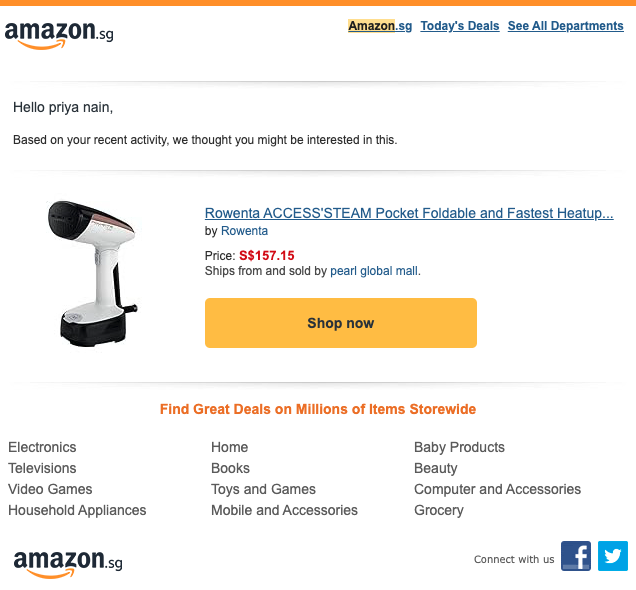
Amazon also considers demographic factors like location, age, or gender and examines how you’ve interacted with their emails in the past to improve future communications. This segmentation is both dynamic and behavioral, meaning Amazon constantly adjusts its categories based on your evolving interactions with their services. This strategy is a blend of fixed variables and changing consumer behavior.
So, next time you get an Amazon email, remember it’s not just a mass broadcast, but a targeted conversation delicately tailored to your tastes and behaviors. Now that’s impressive, isn’t it? Amazon’s way of saying – “We heard you, and we’re here for you.”
| Email Type | Personalization Technique | Impact on Customer Engagement | Impact on Customer Retention |
|---|---|---|---|
| Product Recommendation Emails | Based on browsing history and previous purchases | Increases click-through rates | Encourages repeat purchases |
| Abandoned Cart Emails | Reminders of products left in the cart | Re-ignites interest in the product | Recovers lost sales and retains customers |
| Price Drop Alert Emails | Notifies customers of price drops on items they’ve shown interest in | Drives immediate sales | Incentivizes customers to stay loyal |
What technology does Amazon use for their personalized email campaigns?
Amazon’s personalized email campaigns are powered by a combination of advanced technologies. One of the key technologies is Machine Learning (ML). Amazon uses ML algorithms to analyze customer behavior, preferences, and past purchases. This data is then used to generate personalized product recommendations that are included in the emails.
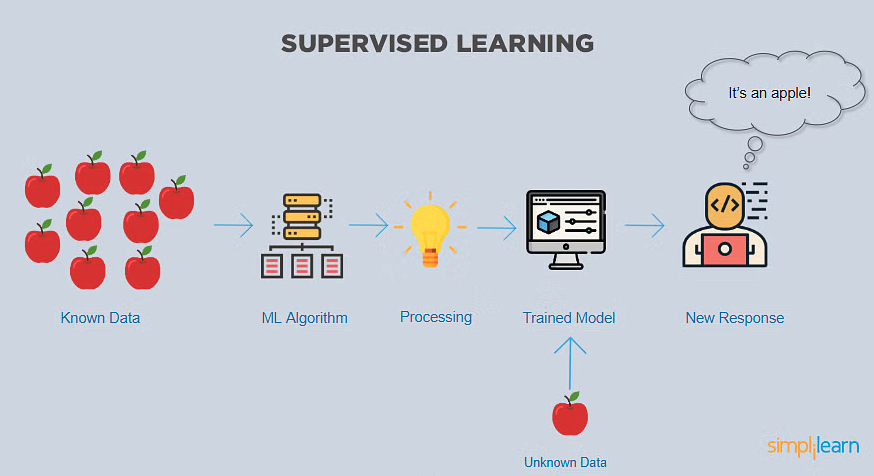
Another crucial technology is Big Data analytics. Amazon collects and analyzes vast amounts of data from its millions of customers. This data is used to segment customers into different groups based on their behavior and preferences. The email content is then tailored to the specific needs and interests of each group.
Amazon also uses Artificial Intelligence (AI) in its email campaigns. AI is used to predict future customer behavior based on past data. For instance, if a customer frequently buys books from a specific genre, AI can predict that they would be interested in new releases from that genre. This information is then used to personalize the email content.
Natural Language Processing (NLP) is another technology that Amazon uses. NLP is used to analyze customer reviews and feedback. This analysis helps Amazon understand what customers like or dislike about a product. The insights gained from this analysis are then used to improve the email content.
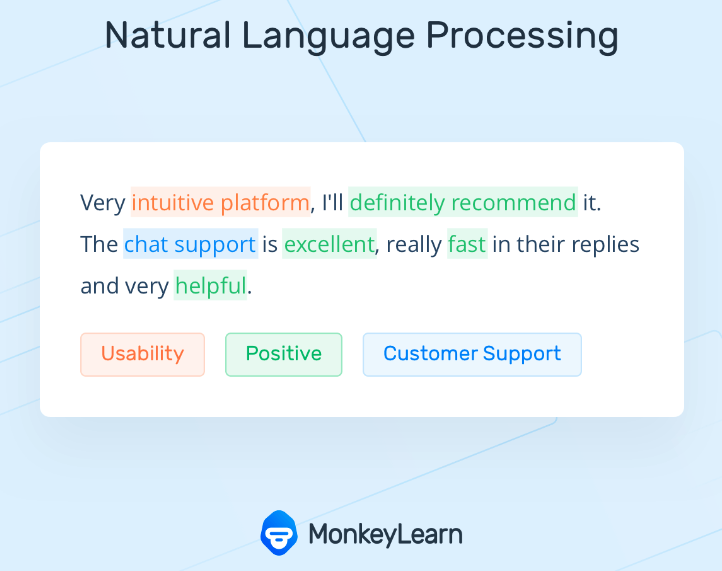
Amazon uses A/B testing to optimize its email campaigns. A/B testing involves sending two different versions of an email to a small group of customers. The version that performs better is then sent to the rest of the customers. This helps Amazon ensure that its emails are as effective as possible.
How often does Amazon send out personalized emails?
Personalized emails from Amazon hit the digital inboxes of their customers with a well-oiled predictability that feels almost intuitive. Depending on the user’s interaction with the site and their purchasing history, Amazon sends out emails between 1 to 5 times a week. But how do they strike the balance to avoid email fatigue?
Amazon relies heavily on data to determine the optimal frequency. Their sophisticated algorithms analyze the purchasing history, browsing patterns, and response rates of each customer. Based on this data, they tailor their email frequency to engage users without irritating them with an overflow of messages.
Amazon has tuned its approach to reach a sweet spot with its audience. However, it should be remembered that the true strength of Amazon’s personalized emails isn’t in the quantity but the quality. By focusing on providing relevant content and genuine value in their emails, they effectively ensure higher open rates and stronger customer engagement.
What are some specific success stories related to Amazon’s personalized emails?
One notable success story of Amazon’s personalized emails is their ‘Recommendations for You’ feature. These emails are tailored based on the customer’s browsing and purchasing history, suggesting products that align with their interests. This strategy has proven successful in driving repeat purchases and increasing customer engagement, as it gives customers a personalized shopping experience directly in their inbox.
Another success story is Amazon’s ‘Abandoned Cart’ emails. When a customer adds an item to their cart but doesn’t complete the purchase, Amazon sends a personalized email reminding them of the item. These emails often include images of the product, a direct link to the cart, and sometimes even a small discount to encourage the completion of the purchase.
This strategy has proven to be effective in recovering lost sales, with a study showing that Amazon’s cart recovery rate is as high as 15%.
Amazon’s ‘Prime Member Exclusive’ emails are another example of their successful personalized email strategy. These emails provide Prime members with exclusive deals and offers, enhancing the perceived value of their membership and encouraging customer loyalty. This strategy has contributed to the high retention rate among Prime members.
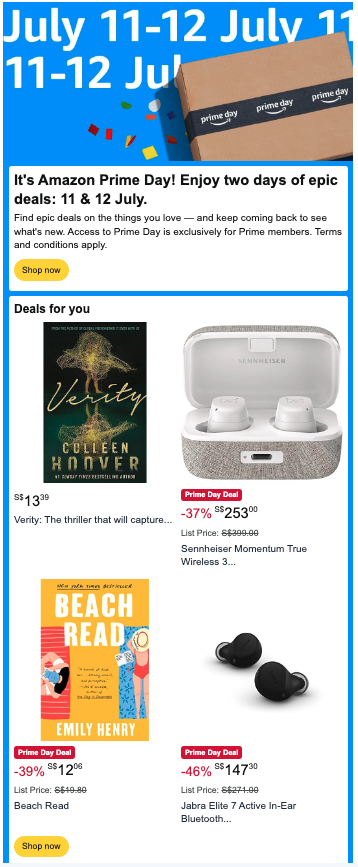
Amazon’s ‘Recently Viewed’ emails have also been a success. By sending customers emails featuring items they’ve recently looked at, Amazon keeps their products at the top of customers’ minds, increasing the likelihood of a purchase. This strategy has been effective in driving both engagement and sales.
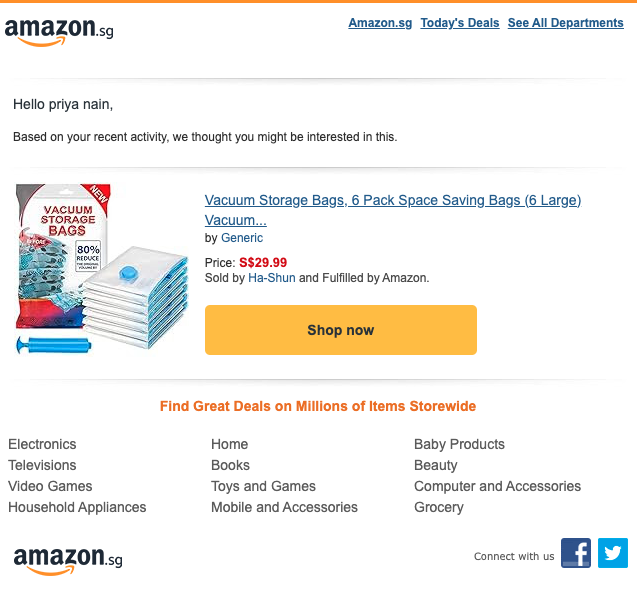
| Email Type | Purpose | Effect on Retention | Effect on Engagement |
|---|---|---|---|
| ‘Recently Viewed’ Emails | Remind customers of products they recently viewed but haven’t purchased | Increases likelihood of return purchases | Effective in engaging customers still in the consideration phase |
| ‘You Might Like’ Emails | Suggest related or complimentary items to ones the customer has already shown interest in | Upsells and cross-sells, encouraging increased buying frequency | Promotes customer browsing and discovery of new items |
| ‘Special Offers’ Emails | Notify customers of sales or promotions relevant to their purchase history | Drives repeat purchases and builds customer loyalty | Keeps customers informed, engaged, and excited about upcoming deals |
